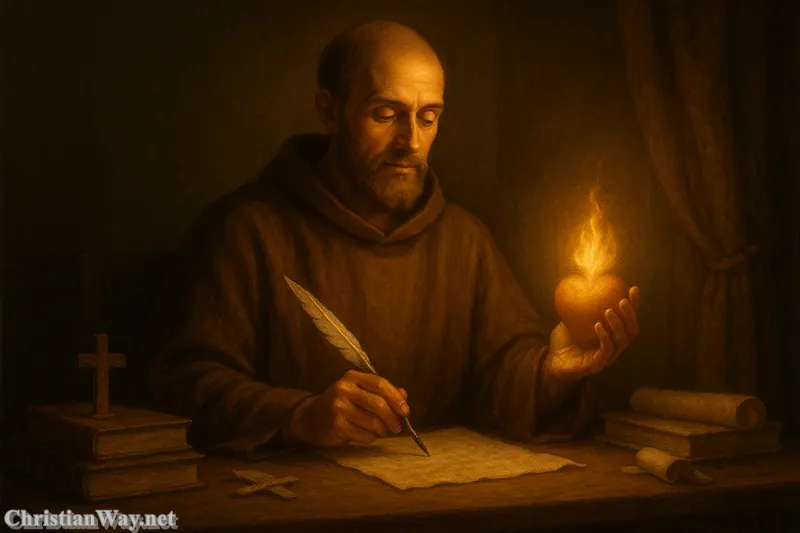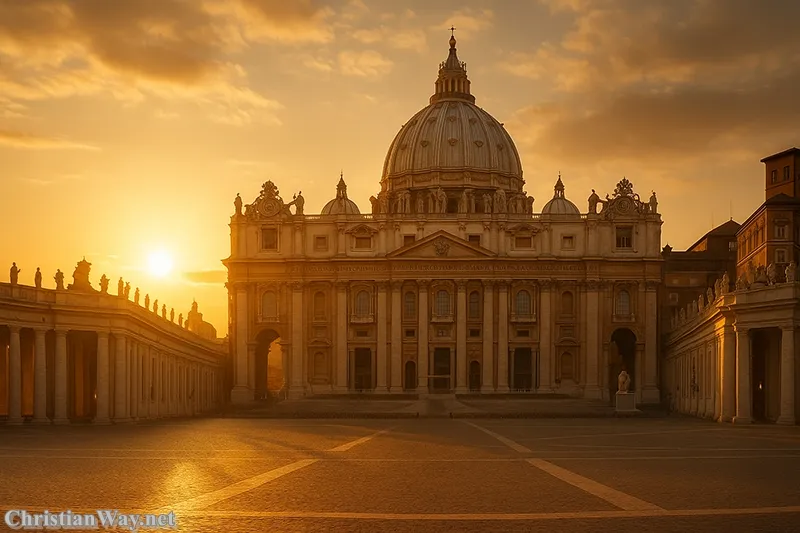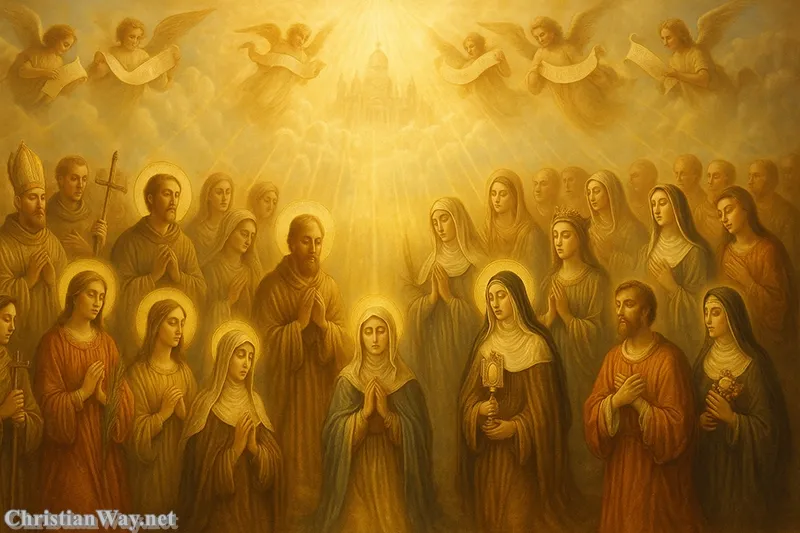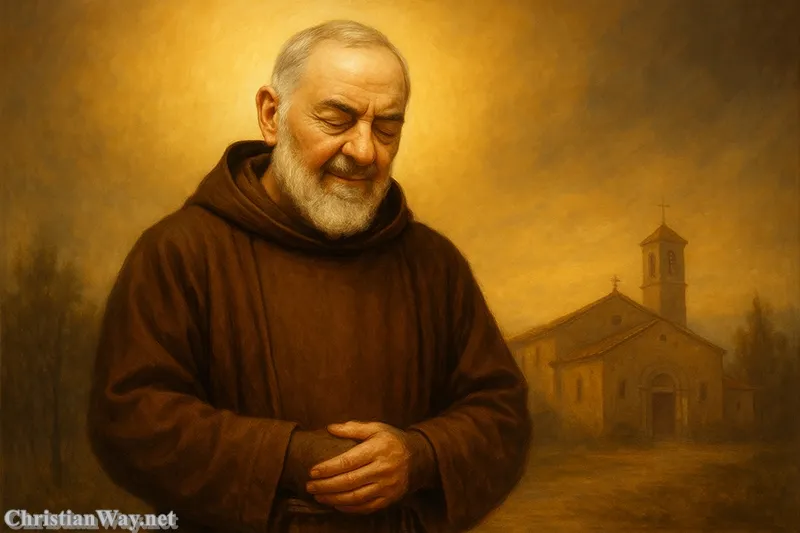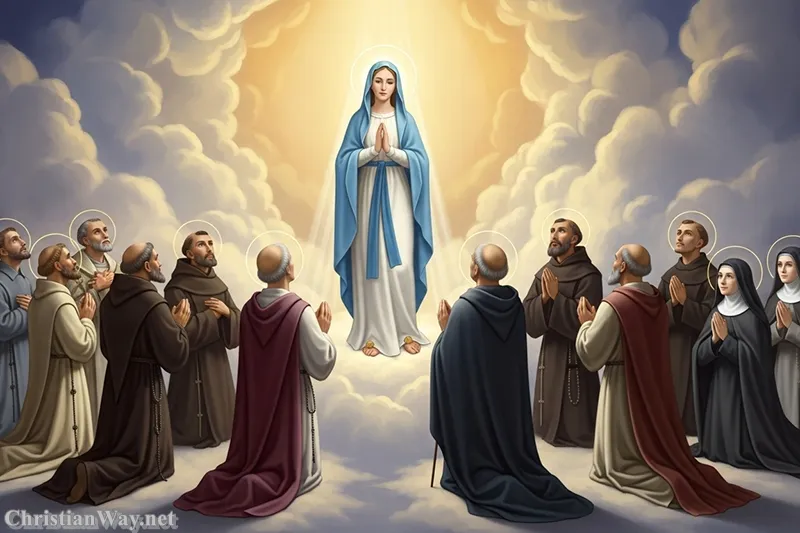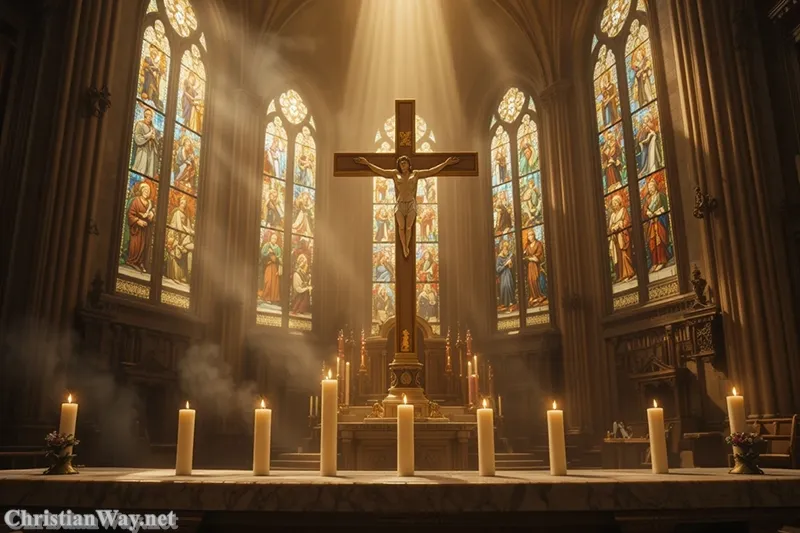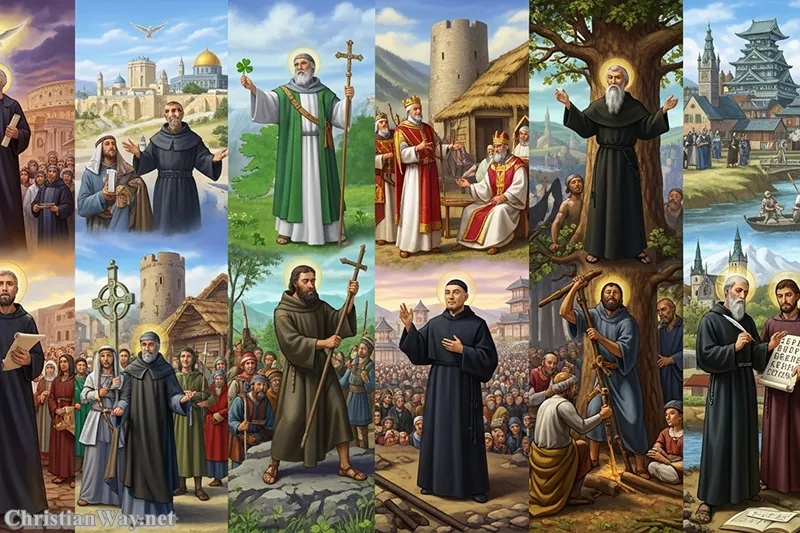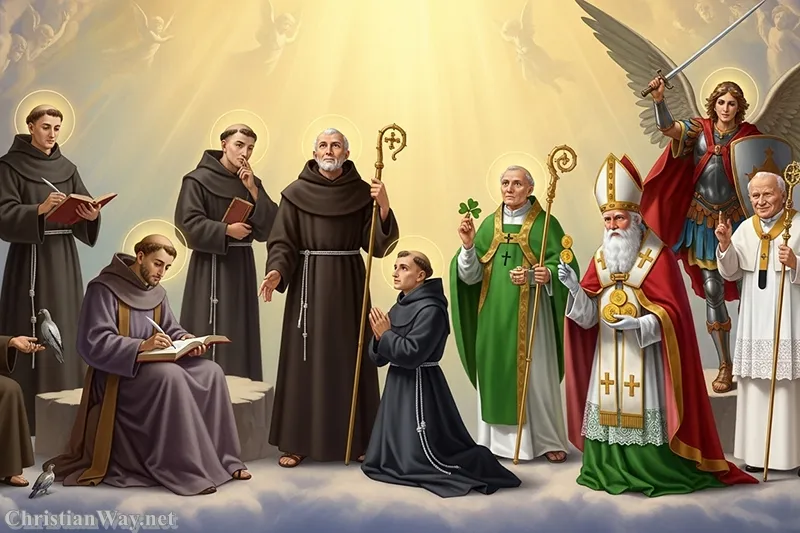Dear friends in Christ,
Europe, with its cathedrals, monasteries, and ancient pilgrimage roads, stands as a living testimony to the faith that shaped an entire civilization. Long before it was defined by nations or empires, Europe was formed in the heart of the Gospel — in the lives of men and women who heard the call of Christ and responded with courage, holiness, and love. These European saints were not merely religious figures; they were the architects of Christian culture, the builders of compassion, learning, and moral order.
In every corner of the continent — from the misty isles of Ireland to the sunlit hills of Italy, from the snowy mountains of Poland to the sacred caves of Spain — God raised up souls whose light has never dimmed. They preached peace where there was war, mercy where there was cruelty, and faith where there was despair. They are the saints of Europe, whose voices still echo through the centuries, reminding us that holiness is the truest form of civilization.
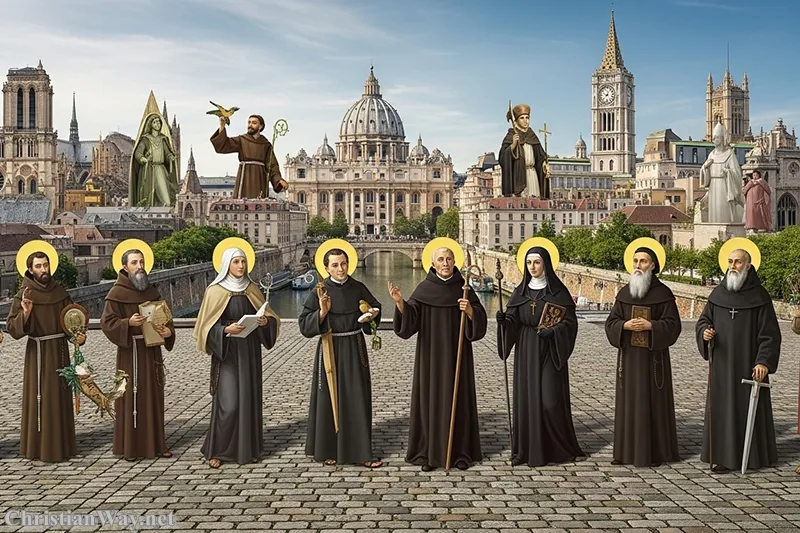
Let us walk together through the lives of ten of the most famous saints from Europe — men and women who not only transformed their own nations but also gave shape to the soul of Christendom itself.
1. Saint Benedict of Nursia (Italy) — Father of Western Monasticism
Saint Benedict (480–547) is rightly called the “Father of Western Monasticism.” In an age when Europe was collapsing after the fall of Rome, Benedict withdrew to the cave of Subiaco, where he sought God in silence and prayer. From that solitude arose the Benedictine Rule, a path of balance — “Ora et labora” (“Pray and work”) — that would become the foundation for monastic life across the continent.
His monasteries preserved learning, cultivated the land, taught the poor, and offered hospitality to pilgrims and strangers. Through his sons and daughters, Saint Benedict gave Europe its moral backbone and spiritual rhythm. Pope Paul VI declared him the Patron Saint of Europe, a recognition of how deeply his spirit still animates Christian civilization.
2. Saint Patrick (Ireland) — Apostle of the Emerald Isle
Born in Roman Britain around 385, Saint Patrick was kidnapped by Irish raiders and enslaved as a shepherd in Ireland. After escaping, he returned years later — not for vengeance, but for mission. With a heart filled with the fire of the Gospel, Patrick evangelized the island, converting kings and clans, and transforming pagan Ireland into a land of monasteries and missionaries.
His story embodies the transformative power of forgiveness and faith. Through his prayers, Ireland became a beacon of Christian scholarship and holiness, sending missionaries throughout Europe. Saint Patrick remains one of the most beloved European saints, whose legacy still shapes both Irish culture and Christian identity worldwide.
3. Saint Augustine of Hippo (born in Roman North Africa, influential in Europe) — The Mind that Formed Christian Thought
Though born in North Africa (354–430), Saint Augustine’s influence permeated all of Europe. His writings — especially Confessions and The City of God — laid the intellectual foundations for Western Christianity. Augustine’s theology on grace, sin, and redemption became the guiding light of medieval thought and beyond.
He wrestled with doubt, desire, and despair, showing that faith is not for the flawless but for the wounded who seek healing in God. His conversion story inspired countless others, from monks to kings. The monasteries of Europe carried his thought into every corner of Christian civilization, making him one of the great saints of Europe’s spiritual heritage.
4. Saint Francis of Assisi (Italy) — The Poor Man Who Renewed the Church
Few names in Christian history shine as brightly as Saint Francis of Assisi (1181–1226). Born into wealth, he renounced everything to embrace the poverty of Christ. His radical simplicity and love for all creation reawakened the Church to the joy of the Gospel.
Francis’ influence spread rapidly through his followers — the Franciscans — who brought renewal to parishes, universities, and cities across Europe. He is a saint who taught civilization the language of peace, humility, and reverence for every creature. His Canticle of the Sun still sings through the soul of Europe, a hymn of harmony between man and God’s creation.
5. Saint Teresa of Ávila (Spain) — The Mystic Reformer
In the turbulent 16th century, Saint Teresa of Ávila (1515–1582) emerged as one of Europe’s most luminous mystics. A Carmelite nun filled with divine fire, she reformed her order with courage and deep spiritual insight. Her writings — The Interior Castle and The Way of Perfection — remain spiritual treasures of the Church.
Teresa’s vision of prayer as a journey inward toward divine union transformed not only monastic life but also Christian spirituality itself. She is one of the first women declared a Doctor of the Church, showing that holiness and intellect walk hand in hand in the kingdom of God.
6. Saint Thomas Aquinas (Italy) — The Angelic Doctor of Christian Reason
Saint Thomas Aquinas (1225–1274) stands as a monumental figure in European theology. A Dominican friar and philosopher, his synthesis of faith and reason — especially in the Summa Theologiae — united Greek philosophy with Christian doctrine, giving the West its intellectual framework for centuries.
He taught that truth cannot contradict truth, that faith and reason together lead to God. His influence on European universities, law, and ethics is incalculable. Through his wisdom, Europe learned that holiness is not opposed to thought, but that the mind, illuminated by grace, becomes a path to contemplation.
7. Saint Catherine of Siena (Italy) — The Voice that Moved Popes
Born in 1347, Saint Catherine of Siena was a mystic, reformer, and peacemaker in a divided Europe. Though a young woman without formal education, she became a counselor to princes and popes. Her courage brought the papacy back from exile in Avignon to Rome, reuniting the Church’s heart with its home.
Her Dialogues are among the most profound spiritual writings in Christian literature. Declared a Doctor of the Church and Patron Saint of Europe, Catherine’s voice still calls for holiness in leaders and unity within the Body of Christ.
8. Saint Bridget of Sweden (Sweden) — The Pilgrim of Divine Revelation
Saint Bridget of Sweden (1303–1373) lived as a wife, mother, and later, as a visionary and founder. After her husband’s death, she devoted herself to prayer, receiving revelations of Christ’s Passion that inspired devotion across Europe.
She journeyed on pilgrimages from Scandinavia to Rome and the Holy Land, uniting north and south, laity and clergy, through her prayers and letters. She too was named a Patroness of Europe, representing the faith of the northern lands and the universality of the Gospel.
9. Saint John Paul II (Poland) — The Saint Who Awakened a Continent
Saint John Paul II (1920–2005), born Karol Wojtyła in Wadowice, Poland, became one of the most influential figures of the 20th century. His witness under Nazi occupation and Communist oppression shaped his deep conviction that freedom must be rooted in truth.
As Pope, he re-evangelized a weary Europe, calling it to remember its Christian roots: “Europe, open the doors to Christ!” His teachings on human dignity, love, and mercy renewed the Church and the world. It was under his guidance that the Patron Saints of Europe were formally honored, affirming that holiness, not politics, is the true heart of the continent.
10. Saint Hildegard of Bingen (Germany) — Prophetess of Divine Harmony
Saint Hildegard of Bingen (1098–1179) was a Benedictine abbess, visionary, composer, and natural philosopher — a woman centuries ahead of her time. Her writings and mystical visions unveiled the beauty of creation as a mirror of God’s wisdom.
In her letters to emperors and popes, she urged moral reform and renewal of faith. Her music and poetry still resonate with divine wonder, showing how art and holiness together can sanctify culture. Declared a Doctor of the Church by Pope Benedict XVI, she stands among the greatest European saints whose insight shaped the Christian imagination.
The Spirit of Europe — Formed by Faith
What unites these ten saints of Europe is not geography, but grace. They lived in different centuries, spoke different languages, and faced different trials — yet all shared one vision: Christ at the center of human life. Through their holiness, monasteries became schools, art became prayer, law was tempered by mercy, and civilization itself became a reflection of divine order.
Europe, though wounded by wars and secularism, still bears their mark. The melodies of Gregorian chant, the architecture of Gothic cathedrals, the concept of human rights — all these grow from the seed of the Gospel sown by these saints.
Their message to us today is clear: civilization without sanctity collapses, but holiness rebuilds the world. As Saint Benedict and Saint John Paul II both taught — Europe will find itself again only when it returns to the heart of Christ.
Reflect and Pray
Beloved in Christ, as we look upon the legacy of these famous saints from Europe, let us remember that holiness is not confined to the past. It is a calling written into every baptized soul — a call to bring light into our homes, our nations, and our world.
May these saints remind us that the renewal of civilization begins not with laws or revolutions, but with hearts set on fire by God. And may their intercession strengthen Europe and all peoples to live once more as bearers of faith, hope, and love.
Prayer:
Lord Jesus Christ, through the witness of Your saints, You have built the foundations of Christian civilization. May their faith inspire us to rebuild what is broken, to cherish what is holy, and to live always as citizens of Your Kingdom. Grant that we, too, may shape our world with love, truth, and mercy. Amen.
— Fr. John Matthew, for Christian Way
